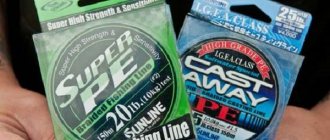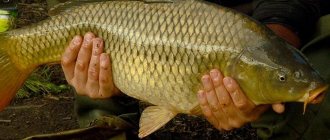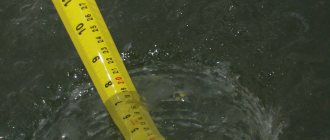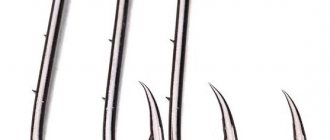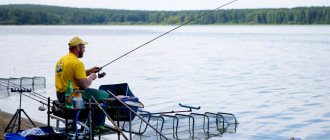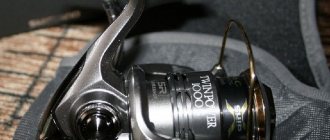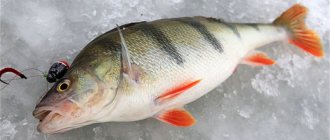So, which sludge is good and which is bad?
Most anglers, when diligently searching for the most suitable fishing point on the bottom, try to follow strict rules: taking into account changes in depth, smooth transitions from hard to soft areas, etc. At the same time, absolutely “bypassing” all the silt. However, in fact, it can be different: on the one hand, completely unsuitable, and on the other, very useful. Let's take it in order.
A clear example of “dead” unusable sludge that is dangerous to fish health
Unsuitable sludge
It is not difficult even for a beginner to correctly identify bad mud for carp fishing, since its characteristic features are a fetid odor and a characteristic black color. Moreover, if you touch it in your hands, it will immediately “unpleasantly” stick to them. In the “thickness” of such sludge, chemical reactions actively occur, the by-products of which are dangerous acids and methane. Therefore, it is easy to guess that living organisms will not survive in such an environment, which means that carp will not be able to profit from anything there. Moreover, he will even avoid these places.
Normal sludge
Unlike the previous version, this is already a good-smelling sludge, literally replete with a lot of nutrients for carp. And not only bloodworms, plankton, larvae or other “goodies” (found or stuck inside), but also minerals that are very useful for the body of carp. In addition, “living” sludge, unlike “dying” sludge, produces oxygen, which also attracts fish by nature.
Chod / "Chod" (English)
According to experienced carp anglers, it is considered an ideal point for carp fishing. You can even argue that many fishermen caught their trophies in precisely such places, without even realizing it (confusing the paths “compacted” by fish with the usual hard bottom). Basically, it is young silt, consisting of a wide variety of natural waste, mixed with living plants.
It is definitely worth noting that even after “cleaning” such places “cleanly”, carp after a while return to them again, since they have already found tasty food there.
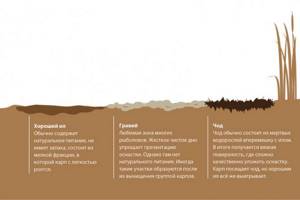
The main differences from the main feeder fishing
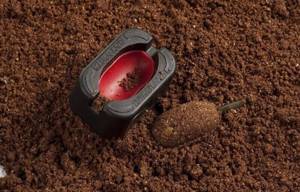
The main difference between feeder gear and carp gear is the presence of some free play of the fishing line relative to the sinker lying on the bottom. In any feeder installation, the fish has the opportunity to take the bait and make a movement without lifting the load. As a result, the tip of the feeder moves, and the angler makes a hook. This kind of fishing allows you to catch not only large fish that can pull a load from the bottom, but also smaller ones. You can also use this method of fishing in the current with a heavy sinker. A lot has been said about the equipment on forums and in videos on YouTube. The most detailed information could be gleaned from seminars with Sergei Popov.
The simplest installation, similar in appearance to carp, is inline on the leadcore. Leadcore makes the fall of the feeder more horizontal, since it has some weight, and it does not stick into the bottom with an edge. The hook can be stuck into the feeder or left free, as with conventional feeder fishing. The free hook additionally allows you to diversify your fishing using a long leash. The bait is located in the water column, attracting active fish from great distances. This helps when catching roach, which often looks for food not at the bottom, but in the water column. Usually, only a hook with a boilie is stuck into the feeder; placing a hook with a regular attachment inside is not so effective.
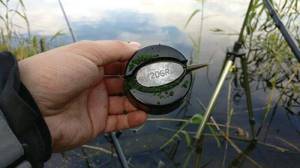
On currents, a flat feeder is rarely used and only on weak currents. Mainly due to the fact that the flat feeder itself holds the food very weakly, and it will be instantly washed out of it. This forces the use of more viscous baits, which behave differently in the water column than usual. Due to the peculiarity of the feeder, the feeding spot will be strongly extended along the current, since already during the fall the feed will begin to be washed out and it will be carried down. The author does not practice this method of fishing in the current, but those who use it prefer a paternoster for the current with a flat feeder. Apparently, this is how it should be caught.
How to find a suitable fishing spot
Most often, silt can be found in the deepest parts of the reservoir, which can be detected using an echo sounder. As a rule, these holes and gullies are not affected by underwater currents, so the situation there remains unchanged. As for shallow ponds with a characteristically flat bottom, the direction of the wind must be taken into account. For example, if you found out from weather center reports (using the Internet) that northeast winds predominate on your lake, then you need to look for good areas of organic silt on its opposite, that is, southwestern part.
Equipment for carp fishing on muddy bottoms
After the entry into force (in the EU) of a number of environmental laws on the protection of nature, one of which prohibits clearing lakes of vegetation (including underwater plants), among most European fishermen the most popular gear (and sometimes the only one when fishing for carp) became the “chod - rig."
Since it is this type of equipment (“floating” at a distance of 5-7 cm from the bottom) that allows you to fish in reservoirs even with a thick layer of silt, mixed with underwater grass. That is, in those areas of the pond where other fishermen often do not go, which means the carp will feel free there.
Proof of this is the fact that in 2010 the largest (and therefore most cautious) specimen in Britain was caught in a thick layer of silt on a “chod rig”.
Rod
Mainly for standing reservoirs, light (picker) class rods are used, designed for feeder weights of up to 25 grams, and medium (middle class) feeder weights of 30-50 grams. Only when it is necessary to cast over the longest distances, should you use rods of a heavier class.
Here it is worth remembering that accurate casting can be achieved when fishing at a distance of up to 50 m, and after that, the further we throw the tackle, the greater the scatter we will have and the worse the feeding spot. The reason for using light-test feeder rods is because there is little or no current on the lake and we don't need to put out heavy feeders to fight it.
And here's what you need to know: Shimano spinning rod classification - I'm passionate about fishing.
At the same time, the lighter the feeder, the more sensitive the tackle, which will respond to even the weakest bites.
Rods with a length of 3.6-3.9 m are considered universal; they allow you to cast quite far, and at the same time do not hinder the angler when fishing in areas overgrown with vegetation. Rods longer than 3.9 m should be used when you need to sharply lift the feeder from the bottom and move it over the edge or make a long cast.
Rods less than 3 m long (mostly pickerel) are used when there is no need to cast far or you fish under overhanging treetops and from a boat.
Feeder on the lake reel selection
Depending on the range of feeder fishing on the lake and the class of the rod, we will need reel spools of different sizes. For fishing close to the shore with pickerel and mediums, we will use reels with a spool size of 1500-2500.
When fishing at medium distances up to 30-40 m, the spool size is 2000-3500. When fishing at a distance of over 40 m, it is better to use larger reels with a spool size of 4000 and above.
It’s good when the reel comes with a second spool; you can wind braid or a monk of a smaller diameter on it. A good reel must lay the line evenly and evenly, since unevenly laid or overlapping line significantly reduces the casting distance.
Installations for muddy bottom
The most promising rig for catching carp in muddy bottoms is the “helicopter”, which is absolutely “not afraid” of viscous surfaces (which is typical for both good silt and suitable “chod”). Even if the sinker is tightly “buried” in the silt, there is no need to worry - the equipment will still “play”.
The following are considered completely unsuitable for carp fishing in muddy reservoirs: inline rigs or, in fact, any leader materials “wrapped” in a shell. The first ones will quickly get bogged down in the mud and immediately “drag” the leashes along with them. The latter, due to their inability to accept uneven bottom contours, create “gaps”.
Preliminary feeding of the fishing spot on the feeder
To attract fish to the fishing point, it was recommended to throw 15-20 feeders with bait into the fishing spot and only after that tie a leash with a hook and start fishing. It’s like with girls - first you need to lure them in, and then go all out.
Well, if the experts advise so, I will do so too.
To reduce the number of casts, I decided to use a large feeder. I bought it specifically for these purposes. The weight of the feeder was 160 grams, which exceeded the test load of my rod, so I removed the weight from it and sawed off 2 pieces of it. By eye, the weight of the feeder should have decreased to 80 grams.
Having filled the feeder with bait, I threw it into the fishing spot.

Feeding the fishing spot occurs like this:
- Throw in a feeder with bait.
- We wait 15-20 seconds for the bait to begin to fall apart and fall out of the feeder.
- We make a small jerk to release the feeder.
After repeating this procedure 5 times, I realized a major mistake in my actions. The weight of my feeding trough is 80 grams, and I am going to fish with a trough weighing 50 grams. The problem is that I may simply not bring the smaller feeder to the pre-feeding site. This is how it turned out later.
Goodbye to the found edge - I’ll fish wherever I can. In my own eyes, I was justified by the fact that this was my first time fishing with a feeder and I had absolutely no practical experience.
Bait for carp fishing in muddy ponds
The most important conditions for choosing the right bait for carp in muddy bottoms are bright color and light weight (so that it stays on the soft surface of the mud). That is why the optimal solution would be to use bait boilies (you can do it straight from the package). Just not (!) solid ones, as they will get lost in the thickness, thereby encouraging the fish to look for food in the lower layers. Thus, bright and loose bait (neatly and evenly lying on the silty bottom) will be visible to the carp from afar.
Naturally, you can add other elements to the finished mixture. For example, from natural and cheap corn grains to any crushed store-bought additives. Flaxseed oil is considered the ideal flavoring agent for catching carp in silt, since it not only attracts fish, but also excellently (according to its characteristics) retains odors for a long time. At the same time (and this is important), it steadily interrupts the specific “aromas” of sludge.
Which attachments to use
When fishing for carp in muddy reservoirs, it is best to use boilies (only solid ones) as bait. In terms of taste, “fruit” products are perfect. Mandatory conditions for baited boilies (especially for muddy bottoms) are a bright color (normally contrasting with the dark surface of the bottom) and maximum aroma (able to overcome the quickly ingrained smell of mud). As for the latter, English fishermen perform the so-called “rehydration” of boilies for this purpose. In other words, they are soaked for a while in a solution of nutritional supplements in combination with the hemp oil mentioned above.

